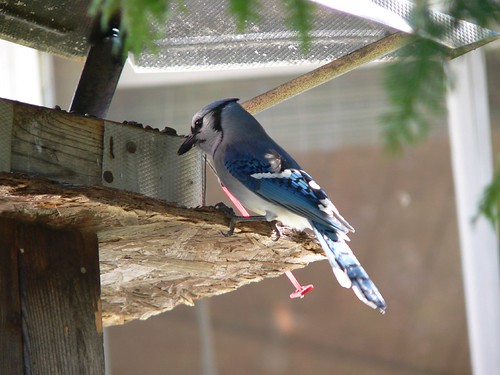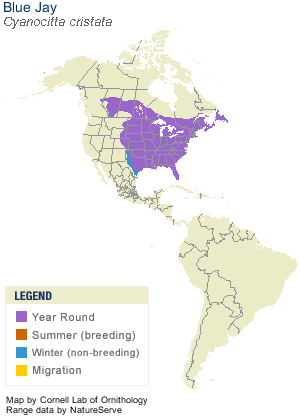Name (Latin): Cyanocitta cristata

Size: Smaller than crows, larger than robins.
Description: perky crest; blue, white, and black plumage
Song/Sounds: Listen Here.
Habitat: Blue Jays are birds of forest edges. A favorite food is acorns, and they are often found near oaks, in forests, woodlots, towns, cities, parks.
Seasons in Keene: A year round inhabitant of our area.
Nest and Eggs: The blue jay nest is much like a robins nest, composed of twigs and sticks. The inside of the nest is normally lined with grass. Blue Jays are notorious raiders of other birds' nests. They will attack any bird in the immediate vicinity of their nest in the spring, as well as steal eggs, young birds and even nests. They like robin nests (which share consturction meterial and technique) and often appropriate them for nesting.
Similar Species: Stellar's Jay, Western Scrub Jay, Florida Scrub Jay
Distribution:

Population: A widespread and stable populaiton in the Keene area.
Trends: It appear the Blue Jay population in North America is suffering detrimental effects from the West Nile Virus.
Threats: Like many forest birds, hunted by small predatory mammals. Also prey for hawks and eagles.Fun Facts: Blue Jays prefer tray feeders or hopper feeders on a post rather than hanging feeders, and they prefer peanuts, sunflower seeds, and suet. Planting oak trees will make acorns available for jays of the future. Blue Jays often take drinks from birdbaths.
Video: See Here.